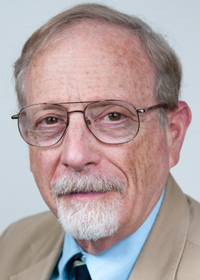Vernon E. Cronen, Ph.D.
Department of Communication
Professor Emeritus, University of Massachusetts, Amherst, Massachusetts
Visiting Professor, University of North Carolina, Wilmington
Phone: (413) 545-3682
Email: vec@comm.umass.edu or cronenv@uncw.eduVernon Cronen is currently a visiting professor at the University of North Carolina, Wilmington. He has been a member of the faculty of the University of Massachusetts, Department of Communication since 1970. He was for many years Senior Consultant at the KCC Foundation (Kensington Consultation Centre, London). He is also an Associate of CMM Institute for Personal and Social Evolution. Professor Cronen is best known for his work on the communication theory Coordinated Management of Meaning which he co-authored with Barnett Pearce. He has lectured and presented workshop in many places in the US and through Europe. At the end of the 2011 academic year he will retire from University of Massachusetts to assume a position as Visiting Professor at University of North Carolina, Wilmington, NC. Vernon Cronen is Co-author with Barnett Pearce of the book Communication, Action and Meaning: The Creation of Social realities . Cronen describes CMM as a “practical theory” that can also be put to critical purposes. As a practical theory it provides a grammar of action for joining with others to create new possibilities for joint action. He is author or co-author of numerous articles and book chapters in communication, psychology, and consultation.
Vernon Cronen has worked for many years on the problem of how to systematically inquire into the process of joint action. Following John Dewey, he argues that cultures, relationships, identities, and institutions are created inside the fundamental process of communication. Similarly, he contends that ways of thinking, feeling, recalling, perceiving, acting, and talking are all created inside that primary process. Cronen explains the coherence of communication as a moral logic of what persons can, must, and must not do that emerges and changes in communication. His way of analyzing the emergent logical forces that connect features of the process is meant to show how person create constraints and possibilities for the self and others. In recent years his work has focused on the aesthetic dimension of communication from a CMM prospective, and on the extension of CMM to media studies.

